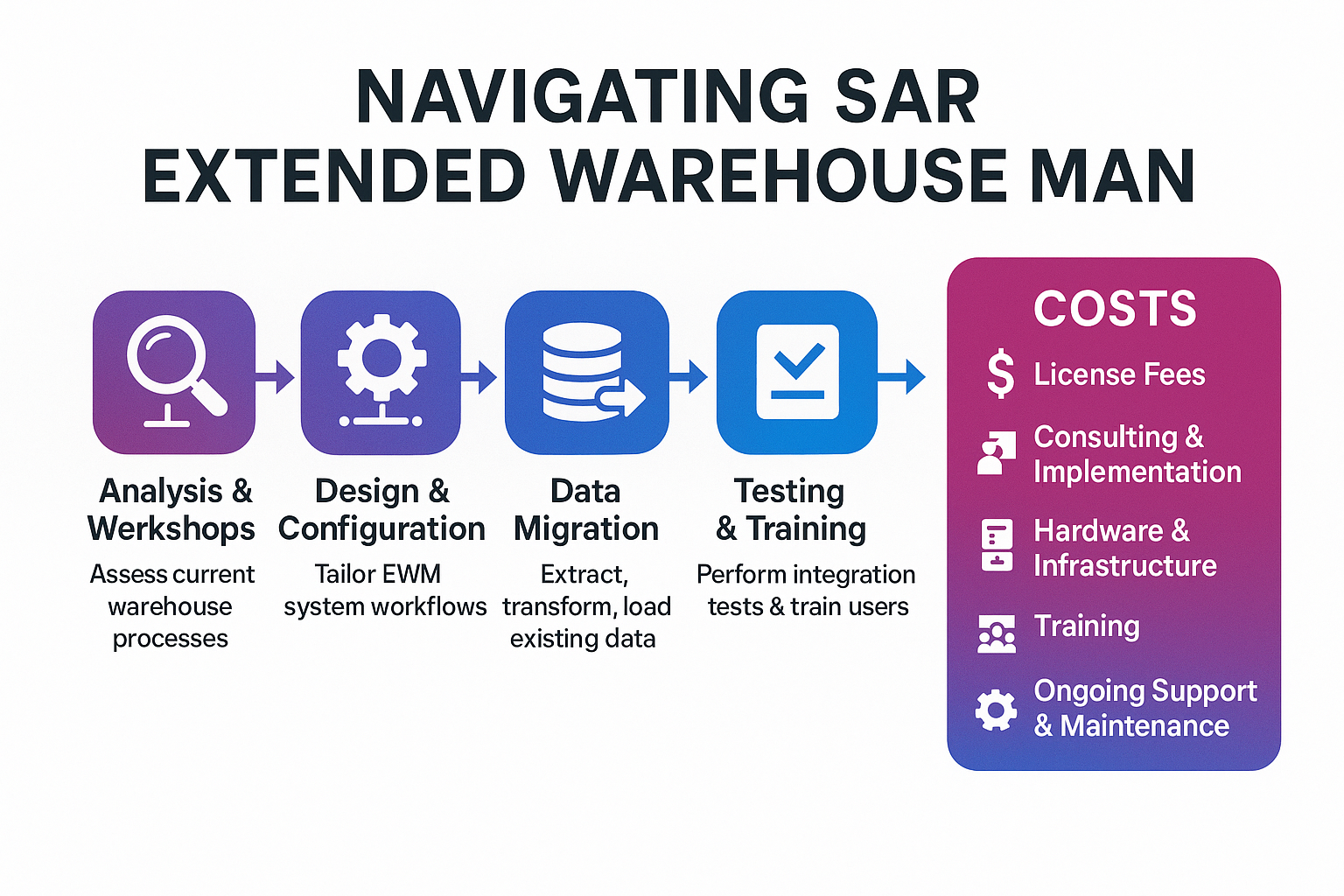Navigating SAP Extended Warehouse Management: Understanding the Investment and Intricacies
SAP Extended Warehouse Management (EWM) is a comprehensive solution designed for large and complex warehouse operations, offering a wide array of features for managing intricate logistics. While SAP is a globally recognized leader in enterprise software, businesses considering SAP EWM for their warehouse management needs should be prepared for a significant investment and a detailed, often lengthy, implementation process.
The Multi-Stage and Resource-Intensive Implementation Journey
Deploying SAP EWM is not a straightforward task and typically involves a structured, phased approach that can take a considerable amount of time – often several months or even longer, depending on the scale and complexity of your warehouse operations. The initial phase usually involves a deep dive into your current warehouse processes, requiring extensive workshops and consultations to map your specific requirements to SAP EWM's capabilities.
Following the initial analysis, the design and configuration phase begins, where the system is tailored to your unique workflows. This often involves intricate configurations for receiving, put-away strategies, inventory management rules, order picking techniques, packing processes, and shipping integrations. Customization might be necessary to address specific industry requirements or unique operational needs, adding further complexity and time to the project. Data migration from your existing systems is another critical step, demanding careful planning and execution to ensure data integrity and a smooth transition.
Thorough testing is paramount to ensure the configured system meets your business requirements and functions correctly in your environment. This includes multiple rounds of testing, such as system integration testing and user acceptance testing, which require dedicated time and involvement from your warehouse staff. Training your team on the new SAP EWM system is also a substantial undertaking, requiring comprehensive training programs to ensure all users can effectively utilize the software's extensive features. Even after the system goes live, ongoing monitoring, support, and potential adjustments are often necessary to optimize performance and address any emerging issues.

Decoding the Costs: A Significant Financial Commitment
The financial investment required for SAP EWM can be substantial, encompassing various cost components beyond just the software licenses. SAP's pricing model for EWM is typically tailored to enterprise-level clients and can involve significant upfront license fees, as well as ongoing subscription costs.
Beyond licensing, the implementation costs for SAP EWM are often considerable. Engaging experienced SAP consultants for the implementation, configuration, customization, and integration of the system is a significant part of the overall expense. Data migration services, which are crucial for a successful deployment, also contribute to the total cost. Depending on your existing IT infrastructure, you might also need to invest in new hardware or upgrade your current systems to meet SAP EWM's requirements, especially for on-premise deployments.
Furthermore, the ongoing costs associated with SAP EWM need to be factored into your budget. These include annual maintenance fees for the software licenses, potential costs for system upgrades and updates, and the expense of ongoing technical support. Training costs for new employees and refresher training for existing staff will also contribute to the long-term financial commitment of using SAP EWM.
Considering Alternatives for Streamlined Warehouse Management
While SAP EWM offers a powerful and feature-rich solution for warehouse management, the significant investment in both time and cost, along with the inherent complexity of the implementation process, might prompt businesses to explore alternative systems that offer a more streamlined and potentially more affordable approach, especially for small to medium-sized operations.
Before embarking on a complex and costly SAP EWM implementation, it's prudent to evaluate whether a more user-friendly and budget-conscious warehouse management system could provide the essential functionalities needed to optimize your warehouse operations without the extensive overhead and intricate processes often associated with enterprise-level systems like SAP EWM.

